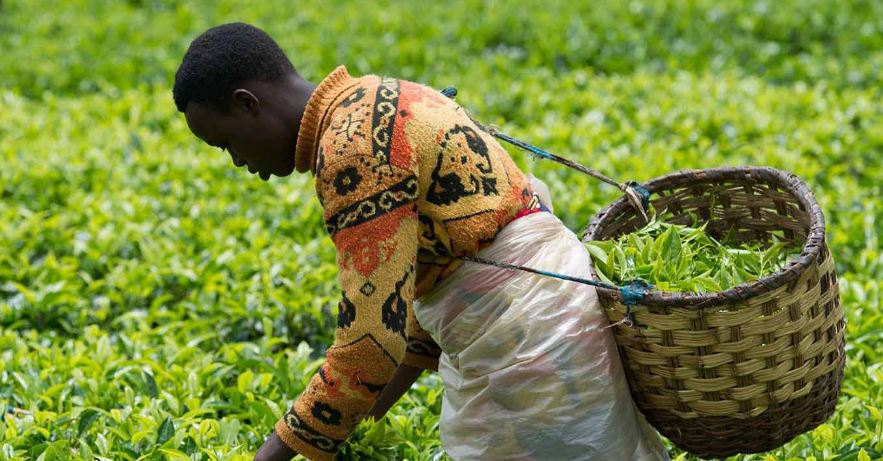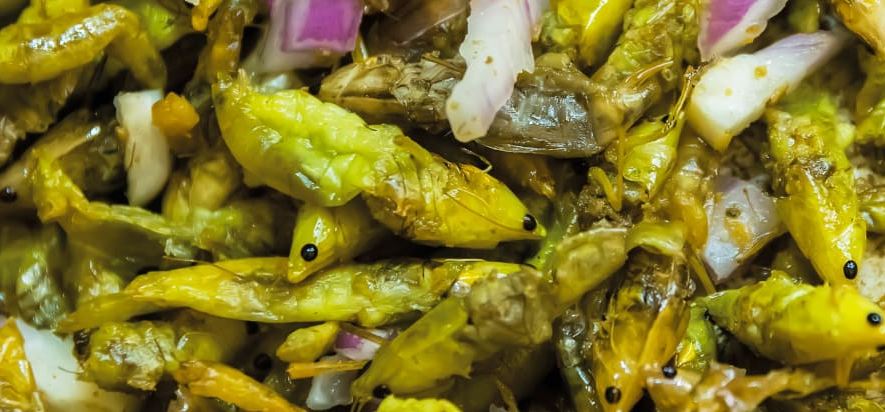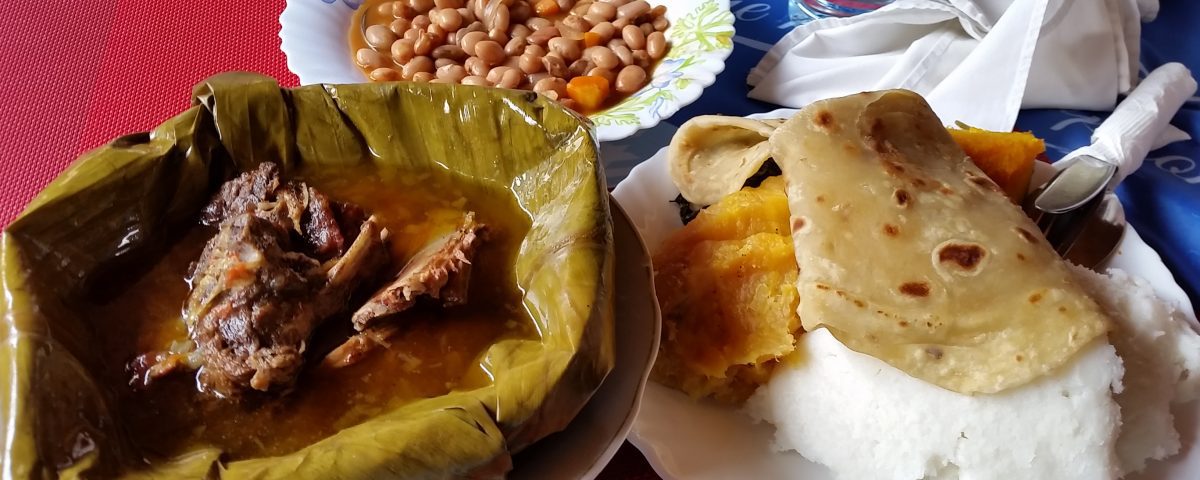Table of Contents
ToggleSituated between Tanzania, South Sudan, Kenya, DR Congo, and Rwanda, Uganda is a small landlocked East-African nation that offers a great mix of cultural activities, rich wildlife and nature to curious travelers.
Whether you are wandering the streets of the capital city, Kampala, or relaxing on the shores of Lake Victoria, Africa’s Largest Lake, you will have the taste of this beautiful nation through the variety of local and regional delicacies (Uganda’s food) that make traveling in Uganda so flavorful. Called the “The Pearl of Africa,” Uganda is indeed a country of beautiful scenery, pleasant weather, abundant wildlife and diversity.
Many Ugandan families, especially in the rural areas of the country, rely on subsistence farming with crops they can cultivate on a small scale. A typical Ugandan diet thus comprises items like cassava, sweet potatoes, plantains, bananas, avocados, corn, millet, and beans. Here are the staple dishes you shouldn’t miss in Uganda;
The Staples of Ugandan Cuisine
Posho (Ugali) is possibly the most ubiquitous of all Uganda meals. This side dish is commonly found throughout sub-Saharan Africa. It is a stiff, porridge-like ball of vital carbs, made with maize corn, sometimes mixed with cassava flour. Posho serves as a base for the varieties of rich stews and sauces especially meat, fish and vegetables.
A typical Uganda table is not complete without Matoke bananas, which are indigenous to the African Great Lakes region. It is one of the most beloved staples in Uganda’s food, with an average Ugandan consuming a staggering 350kg per year, almost 1kg a day.
Short and starchy, matoke bananas in Uganda are harvested green, then steamed while wrapped in their leaves in a laborious process, before finally getting mashed. The result is a satisfying, savory staple with a touch of sweetness.
The city flavors
Inside Ugandan cities like the bustling city of Kampala, a mix of East African, European, Chinese, and Indian influences has created an eclectic cuisine. Here, you can expect to taste a variety of meat-based dishes like brochettes, skewers of beef, goat, fish, or pork spiced with chilis and grilled over charcoals with onions or peppers.
Most restaurants will also serve helpings of potato chips or Indian-style chapati flatbreads to accompany the meals.
Luwombo is common on the menu. In this uniquely Ugandan dish, meat, chicken, fish or ground nuts are slowly steamed in banana leaves. Skill is required to prepare luwombo, an obligatory meal at special occasions in the Buganda Kingdom of central Uganda.
During your Kampala city tour, you can prepare and consume luwombo at a local restaurant, but may learn how the recipe helps prepare young women for marriage. (Secrets are hidden within those banana leaves!).
At Gaba Beach on the shores of Lake Victoria, the specialty is the ‘big fish,’ a whole tilapia grilled with onions, garlic, and carrots for a distinctive smoky taste that’s typically served for 2-3 people and eaten with hands.
Still on the shores Lake Victoria at the Royal Port of Mulungu (Munyonyo), there are no frills, just whole tilapia and Nile Perch – one of the world’s largest freshwater fish – reasonably priced with soda, beers and Uganda waragi gin.
The land of coffee and tea
Uganda’s fertile soil, coupled with high altitudes, creates ideal growing conditions for coffee, which, along with tea, is one of the country’s top exports.
Coffee
A network of close to 1.7 million small growers produce coffee all over Uganda, including the Central Region, eastern Mount Elgon region and southwestern Uganda which is home to Uganda’s silverback mountain gorillas inside the Bwindi Impenetrable Forest.
The Mount Elgon region is internationally recognized for the quality of its Arabica coffee. Imagine drinking locally grown coffee just where it is been grown?
The local coffee farmers will take you through the process of planting of the coffee from the nursery beds, into the coffee trees and harvesting.
You’ll see how coffee is dried, roasted to make delicious coffee. If you’d like to support the local farmers, you can do by purchasing some coffee to take back home as souvenir.
This coffee tour helps in supporting the local coffee farmers who are also proud of showing their specialty in coffee production.
Coffee culture is also present in Entebbe, with establishments like Gorilla Conservation Coffee. Created in partnership with award-winning CTPH Gorilla Conservation Café, it serves excellent Ugandan third-wave coffee with proceeds going towards conservation of the endangered mountain gorillas in Bwindi Impenetrable Forest.
The coffee blend is named after Kanyonyi (RIP), the legendary silverback gorilla from one of Bwindi’s gorilla families called Mubare. Here you can order a fresh coffee or buy coffee beans to drink at home. Coffee is a great gift or souvenir too!
Gorilla Conservation Coffee is a social enterprise that buys the coffee beans of farmers – who live adjacent to Bwindi – at a premium price and gives a donation to sustain the critical health and conservation work of Conservation Through Public Health.
Gorilla Conservation Coffee also trains coffee farmers to improve their coffee quality and increase production yield. This helps farmers to protect the forests and thus protect and conserve the rare mountain gorillas of Uganda.
Tea
Although Uganda exports its award-winning coffee worldwide, most Ugandans have traditionally preferred to drink tea instead.
Outside of the capital, tea remains a favorite drink, sweetened with milk and sugar and enjoyed throughout the day. To see the process of growing tea in action, visit the western Fort Portal region, home to the primate-packed Kibale Forest National Park, which is known for rolling hills covered with the tea plant.
A tea tour is available to interested guests, demonstrating how tea is grown, picked and traditionally processed in Uganda. The tour also shows how ‘black’, ‘green’ and ‘white’ teas are produced and differentiated. Guests are invited to sample the fine teas at the end of the tour whilst looking out over the impressive landscapes.
More Ugandan drinks
In addition to coffee and tea, another drink in Uganda is the Waragi, a triple-distilled gin which is said to go down a treat with tonic.
Uganda waragi is said to come from the words “war gin” and was an import of the British. Local gin is made of bananas and stored in plastic jerry cans. It can be lethal (and is best avoided). Waragi can drop you like a punch from a heavyweight boxing camp.
Bushera millet porridge is another popular staple which you can try on Agartha’s Taste of Uganda Experience. Millet is a common crop and the porridge is drunk all over the country but at Agartha’s you can experience the whole process from “farm to cup”.
Her home in the Ishasha area near Queen Elizabeth National Park is a tasty stop-over on your food tour of Uganda.
Rolex
If you walk or drive down many of streets in Uganda’s towns, you’re likely to see someone selling a Rolex. If you’re struggling to imagine how a Rolex can be sold on Ugandan streets then forget the luxury Swiss watch brand and think Ugandan street food.
As Ugandans have been known to say: “We don’t wear Rolex, we eat them.”
Rolex – the snack – is a shortening of “rolled eggs”. The popular dish, found at road-side stalls throughout the country, is made from a vegetable omelette with added tomatoes wrapped up in a chapati (an Indian flatbread).
It has already achieved some notoriety beyond Uganda but in 2022, Guinness World Records certified the world’s largest Rolex.
A Uganda Rolex can be had for as little as UGX 2000 (around $0.50). It is perfect street food: cheap, quick to prepare, handheld, filling, nourishing, and satisfying.
It is believed that the Rolex delicacy was first popularized by a food vendor who sold it to hungry students from Uganda’s famous Makerere University in Kampala.
The dish then spread to other towns of the country. On your city tour of Kampala, you can have a sight of people crowded around charcoal stoves (Sigiri) perched on wooden stools, chatting as they wait for their Rolex orders to be prepared. The whole process of cooking a Rolex is fast – less than three minutes when all the ingredients are ready.
Nsenene – Grasshoppers
Have you thought of snacking on grasshoppers? Eating insects as a snack is not a common practice in several countries and so some may find it weird. But eating nsenene grasshoppers has been compared to munching on crispy chicken skin. The grasshoppers appear during the rainy season months of April and November.
It is quite a spectacle when the grasshoppers are out and jumping about particularly at night when they gather around the lights. So people set out many lights at night in order to attract many grasshoppers, which they subsequently gather in bags.
Most Ugandans like eating grasshoppers so much that during the grasshopper season, you can see several cars transporting them to the city where they are sold. Some vehicles and taxis will be so full with grasshopper sacks popping out of their windows.
Once they are sold, then the procedure of preparing them as a snack begins in the different homes. The procedure commences with plucking off wings, antennae, and legs from each one to avoid choking you.
A saucepan is put on fire; no cooking oil is added since these insects get to produce their own oil when frying them. You may decide whether to retain your Nsenene longer to make them crunchy or shorter, depending on your preference.
To spice up the taste, you may also add onions and green pepper. In the season months of grasshoppers, there are many vendors selling them, both the raw and those fried, along the streets in downtown Kampala. Many grasshopper sellers will allow you to taste their fried grasshoppers before you buy.
An interesting fact about grasshoppers is that they are a totem for those that belong to the Nsenene Clan in Buganda Kingdom.
Uganda is home to about 56 tribes with the Baganda being one of the tribes who are further divided into 52 clans; each clan has a unique totem which they protect religiously.
For example those in the Nsenene clan cannot eat grasshoppers because it is considered a taboo to eat ones’ totem.
Now you know how Nsenene Grasshoppers are not just any other insects but rather a delicacy in Uganda. They have health benefits when consumed and they can easily become your favorite snack. Try eating Nsenene on your next Uganda safari.
More about Uganda’s Food
As Uganda is home to 56 different tribes, the food culture in Uganda differs from one region of the country to another.
In the Buganda/central region, it is considered rude to leave a guest looking at an empty plate so a waitress may rush to remove your plate as soon as you finish eating.
Culturally, she is exhibiting good manners. Please don’t feel like the waitress is clearing the table ready for the next guest! Ugandan food is plentiful. The country has a perfect climate meaning that there are at least two harvests per year.
It is for this reason that Ugandans don’t finish eating everything on their plate. Ugandan avocados are HUGE and the mangoes and pineapples are the sweetest!
Every guest to Uganda comments on the fantastic fruit and vegetables.
But, most Ugandans prefer eating heavy carbohydrates which they refer to by the collective name of ‘food’. Forget the paleo diet; Ugandans will load up their plates with as many as five types of ‘food.’
Vegetables or salads seem to be a ‘by the way’ and traditionally associated with poverty for many people. The thinking goes that if you have real food (meat and ‘food’) you do not need to live on the free stuff (vegetables) that you can grow in your shamba.
When you visit a Ugandan home, it is customary to be offered something to eat or drink. Your host may get upset if you don’t accept anything.
Sometimes there will be an accompaniment with tea; this is sometimes called an ‘escort” in Uglish – a Ugandan version of English.”
Are you intrigued by Ugandan Cuisine?
This is one of many authentic experiences that Tulambule travel experts have researched in Uganda. Contact us to see how we can weave them into your safari itinerary.














